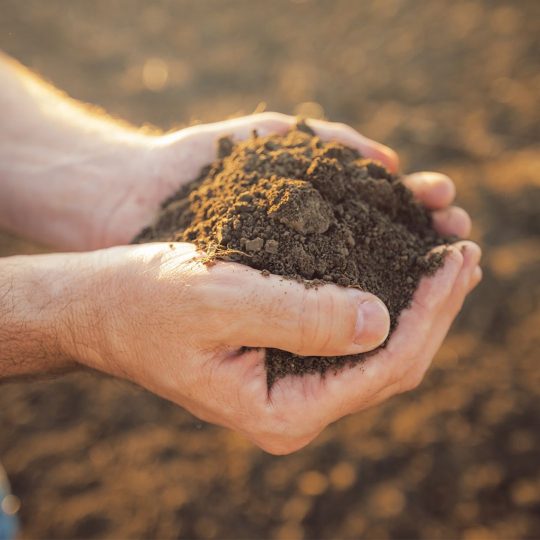How to Improve Poor Soil Quality
Spoiler: Testing Your Type of Soil is Key
Posted
July 20, 2017

How your garden grows depends on a variety of factors. Of course, plants need the right amount of light, water, and nutrients to thrive, and many of these nutrients can be found in the soil. Poor soil quality can lead to an unhealthy lawn or garden, but improvements can be made.
Soil Quality Tests and Types
If you notice that plants are smaller, more weeds are growing, and more pests are appearing in your lawn or garden, you may be dealing with poor soil quality. To know for sure, test the soil to determine nutrient levels. There are lawn and garden companies that are available to run these tests for you and rate the level of nitrogen, phosphorous, and potassium in your soil. You can also discover the levels of pH and organic matter, all of which contributes to the soil quality.
Testing the soil will also show you the type and texture of soil where you’re planting. Soil is made up of sand, silt, and clay particles, and having more or less of one of these components will effect the quality.
- Sandy soil: you can feel the tiny sand particles when you rub some soil in your hands. This is the easiest to work with since it drains quickly.
- Silt soil: sediments are found in the soil near a body of water or left behind from a flooded area.
- Clay soil: heavy clay is more dense and slippery when wet. It takes longer for water to drain or dry in clay soil.
Adjusting Poor Soil Quality
Changing the soil texture is a long, but important process. If you want to improve the quality of your garden, you need high quality soil. Follow these simple steps before the weather turns cold:
- Add organic matter—like chopped leaves, manure, or compost—to your garden to help improve soil texture.
- Spread about eight inches of the matter over your garden.
- Spray with liquid nitrogen to expedite the decomposition process.
- After it sits for about one month, mix the organic matter into the soil.
Adding nutrients from this organic matter back into the soil is like putting it back on a healthy diet.
Once you run the soil tests and find out what it may be lacking, you can also find conventional fertilizers with the proper ratio of nitrogen, phosphorus, and potassium that will give the soil what it needs. The types of liquid or granular fertilizers you find in a store may be cheaper than organic, but you often get what you pay for. You can also mix the two and get the best of both worlds.
Choose the Right Plants for Your Soil
Certain plants grow well in certain types of soil. Once you’ve run the soil tests, look for the type of plants that can thrive in sand, silt, or clay, and plan your garden accordingly. This will save you time, money, and extra work. For more information about testing and planting in your particular area, contact the Elite Tree Care specialists at 610-935-2279.